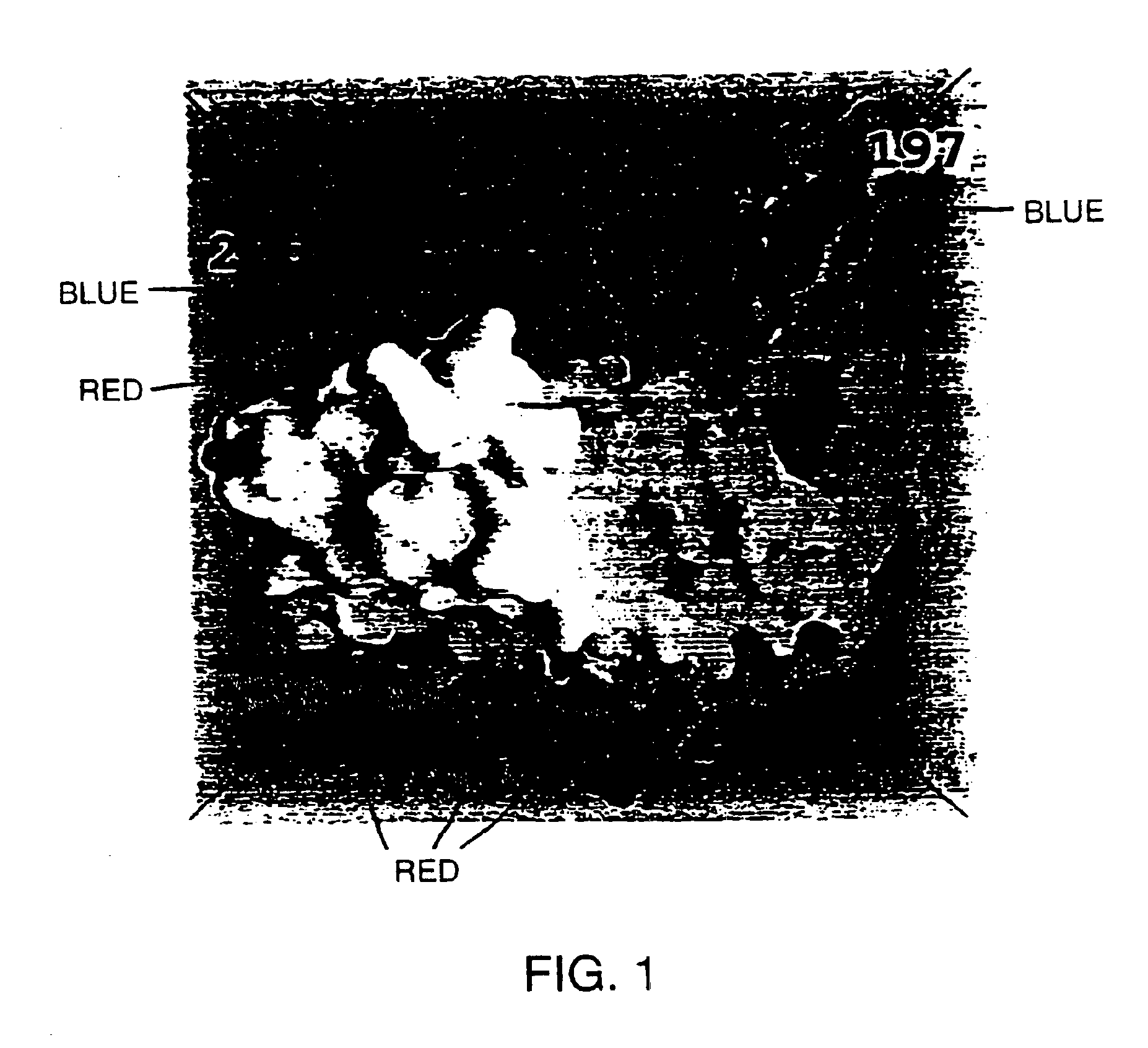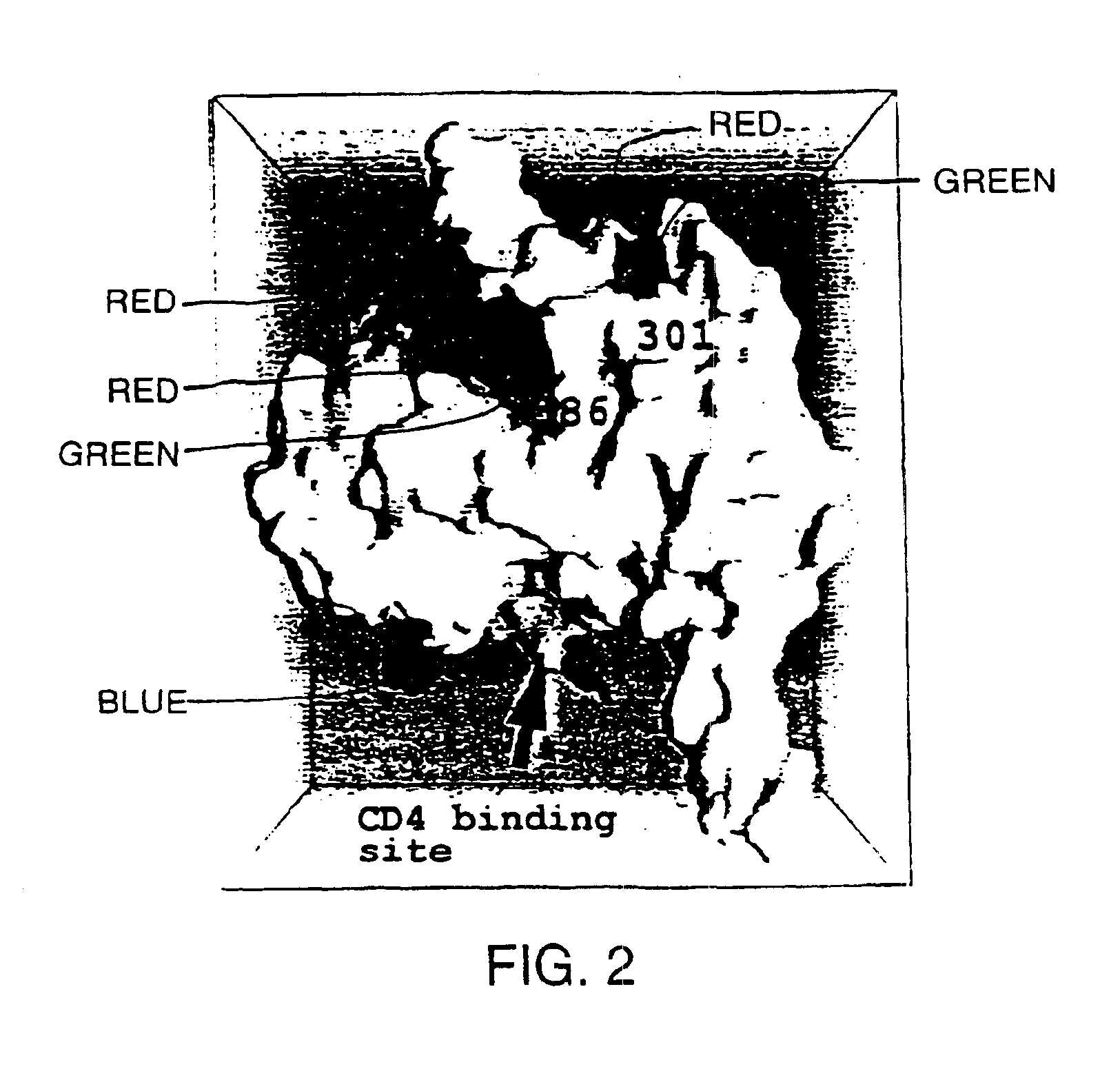Glycosylated modified primate lentivirus envelope polypeptides
a lentivirus and envelope polypeptide technology, applied in the field of envelope polypeptides, can solve the problems of compromising the immune response, reducing the immunogenicity of progressive cd4-positive lymphocytes, and unable to achieve the effects of successful approaches, so as to improve the immunogenicity of weakly immunogenic conserved
- Summary
- Abstract
- Description
- Claims
- Application Information
AI Technical Summary
Benefits of technology
Problems solved by technology
Method used
Image
Examples
Embodiment Construction
[0036]It is important to elicit humoral immune responses directed toward conserved, functional elements of the HIV-1 exterior envelope glycoprotein, gp 120. Two functions common to virtually all primate lentiviruses such as the HIV-1 exterior envelope glycoproteins are the ability to bind the primary virus receptor, CD4, and to bind the more recently defined co-receptors. The co-receptors belong to a particular subset of the chemokine receptor family. The present polypeptides unmask the recessed CD4 binding site of gp 120 or better expose the putative chemokine receptor binding region by targeted deglycosylation. In an alternative approach, the remaining carbohydrate moieties are used to orient the CD4 binding site for more efficient presentation to the humoral immune system. These immunogens should elicit a greater percent of the more broadly neutralizing antibodies, as compared with the wild-type envelope glycoproteins such as gp 120.
[0037]The selective deglycosylation of at least...
PUM
| Property | Measurement | Unit |
|---|---|---|
| Time | aaaaa | aaaaa |
| Electric potential / voltage | aaaaa | aaaaa |
| Hydrophobicity | aaaaa | aaaaa |
Abstract
Description
Claims
Application Information
 Login to View More
Login to View More - R&D
- Intellectual Property
- Life Sciences
- Materials
- Tech Scout
- Unparalleled Data Quality
- Higher Quality Content
- 60% Fewer Hallucinations
Browse by: Latest US Patents, China's latest patents, Technical Efficacy Thesaurus, Application Domain, Technology Topic, Popular Technical Reports.
© 2025 PatSnap. All rights reserved.Legal|Privacy policy|Modern Slavery Act Transparency Statement|Sitemap|About US| Contact US: help@patsnap.com



